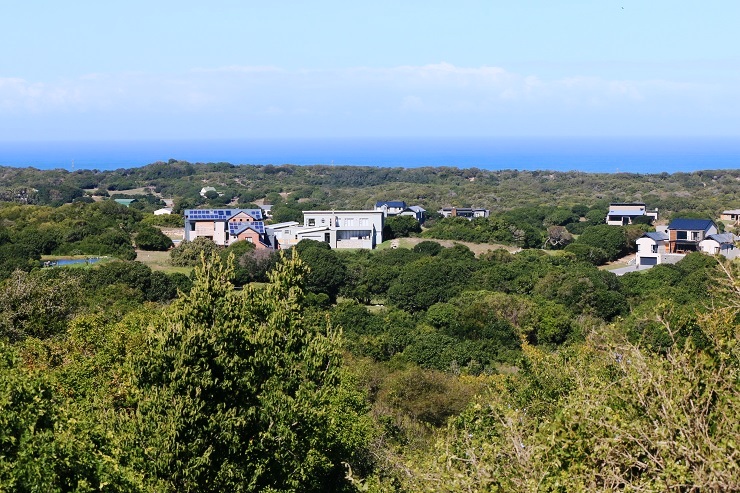Due to Sardinia Bay Golf & Wildlife Estate’s proximity to the coast, architects should take special precautions to ensure the longevity of the homes they design.
The estate is conveniently close to Port Elizabeth’s Sardinia Bay beach, but its unique location means cutting corners during construction could compromise your investment over time.
Estate Design Review Committee member Thea Bierschenk, of Erik Voigt Architects, says homes should be built to last and therefore the materials used in construction should be carefully considered.

“The estate is within three kilometres of the sea and so falls into what is considered the coastal corrosive zone, which stretches up to five kilometres inland.
“This means the roof sheeting, aluminium window frames and fixings and stainless-steel elements could all be bumped up a notch in terms of the specifications.”
Even the paint could include waterproofing additives to be as weather resistant as possible, she says.
“The south-westerly wind is particularly prevalent at Sardinia Bay, which means the walls on that side of the house are at the highest risk of wind-driven water problems.”
Bierschenk says opting for quality products from the outset will save the homeowner anguish down the line.
“If you look at the total lifecycle costs of maintenance and having to constantly go back and forth with contractors, inconvenience and potential damage to property, it works out much better in the long run to go with the better products in the first place.”
The choice of roof sheeting, in particular, is often determined by the elements and in coastal areas the wind is a major consideration.
“Roof sheeting manufacturers also have specific products for high corrosive areas and if they’re not being used it can affect the guarantee and put your recourse at risk,” cautions Bierschenk.
“Because of the prevailing winds in the Sardinia Bay area, storm clips should be installed to keep roof materials down while the sheeting itself should be of a higher spec to handle wind loading properly.
“This usually goes hand in hand with the improved specification for corrosion protection.”
She explains that wind places pressure on the roof as well by generating uplift forces, particularly with shallow roof pitches, which is why materials should be considered carefully.
“If you know from the outset that you’re going to potentially have movement in your roof, the ceiling has to be designed so as to have room to manoeuvre.”
Erik Voigt encourages homeowners to approach the suppliers to ascertain whether they recommend their choice of materials.
“If they want to go for certain products, they must be sure that it is the correct decision. Suppliers will usually advise the homeowner on alternatives if they feel certain materials are not suitable for the intended application.”
Voigt says they aim to empower owners with the right information so that they can understand why certain specifications, details or practices are employed and that it is in their interest to do so.
Building plans are submitted to the Design Review Committee headed by Erik Voigt Architects.
